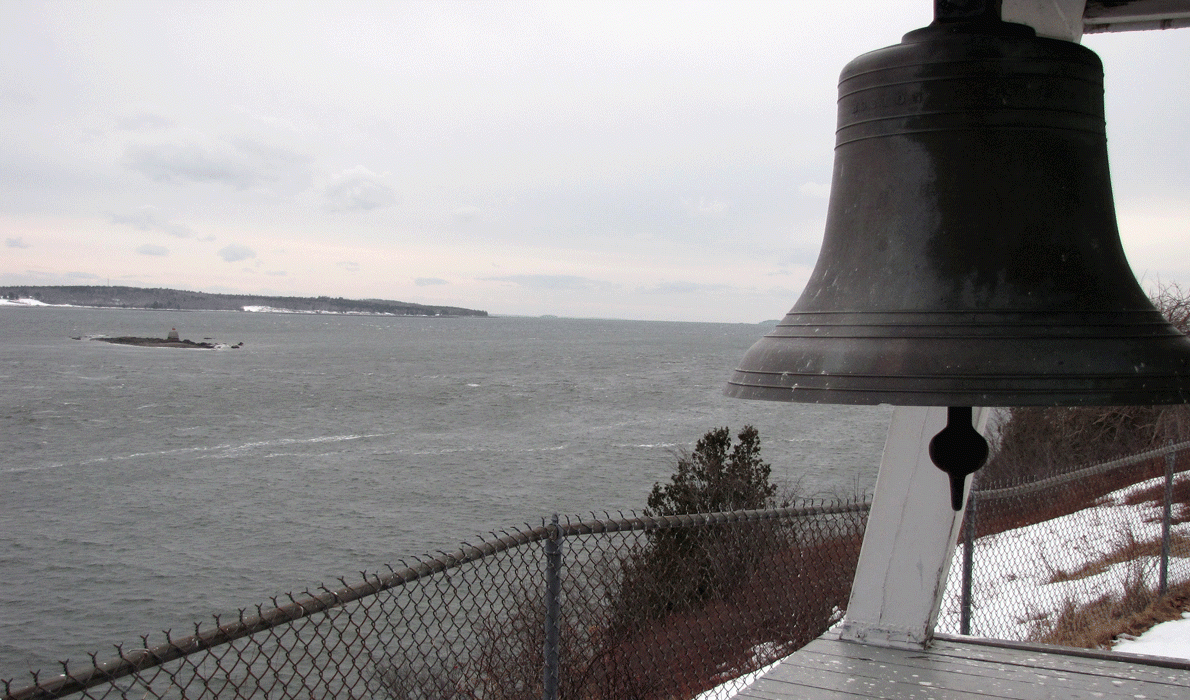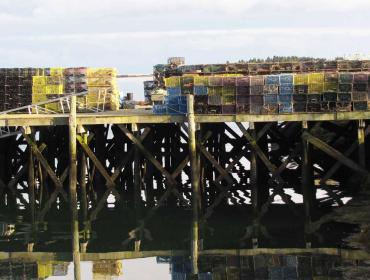Posted November 19, 2018
Last modified November 20, 2018
By Catherine Schmitt
The Penobscot River estuary is the largest in Maine, and one of the largest embayments on the East Coast. Islands and rocky shores dominate, but in the upper reaches, along the Marsh River in Frankfort and the Orland River, are extensive salt marshes and mudflats where the current slows down enough for sediment to settle out from the water at high tide. The mud supports a rich food web of worms, insects, fish, and birds.
But something more ominous is carried by tidal flooding: attached to fine particles of suspended sediment is toxic mercury, the legacy of a factory that supplied paper mills with chlorine and other chemicals from 1967-2000. As much as 12 metric tons of mercury were legally and illegally discharged into the river by the Orrington plant, which last operated under the name HoltraChem in the 1990s.
This would be a bad thing anywhere, since mercury is highly toxic to people and animals. But it turns out the Penobscot Estuary was a particularly bad place to dump mercury.
The estuary’s funnel shape, multiple channels (around Verona Island and Islesboro, for example), and seasonal variations in freshwater flows create complicated currents. Beneath the fresh river water is a “salt front,” a wedge of dense salt water that moves up and down river with the tide. The difference in density between fresh and salt water creates layers, preventing mixing.
Combined, these characteristics mean that sediment fines (including wood chips from historic sawmills and log-driving), sticky with mercury, remain in the estuary rather than flowing directly out to sea.
Cleaning up the mercury is the ultimate result of an ongoing lawsuit in U.S. District Court by the Natural Resources Defense Council and Maine Peoples Alliance against pharmaceutical company Mallinckrodt, the first of several owners of the chemical plant and the only one still in existence. In 2002, the court ordered Mallinckrodt to pay for a study ofthe extent of contamination and how mercury accumulates and moves through the Penobscot system.
“The original lawsuit was under the Resource Conservation and Recovery Act, a federal act that is intended to protect human health and the environment from the potential hazards of waste disposal,” said Drew Bodaly, one of the leaders of the Penobscot River Mercury Study conducted by scientists from companies and institutions in Maine and across North America.
“The first objective of the study was to determine if mercury concentrations were high enough to cause concern today,” he continued. “This was found to be the case.”
In the last year, findings were published in a series of articles in the journal Science of the Total Environment.
At least nine metric tons of mercury persist in the stretch of river between Veazie and Verona.The mercury is attached to a “mobile pool” of fine particles that move back and forth with the tide, and eventually settle out in areas where sediments naturally accumulate, like Mendall Marsh in Frankfort.
The rich organic material in the marsh, combined with low-oxygen conditions, foster production of methylmercury, the toxic form that moves through food webs.
“Penobscot marsh soils are unusual in their capacity to produce and retain methylmercury,” wrote Cynthia Gilmour of the Smithsonian Environmental Research Center.
Most of the songbirds in the marsh and along the lower Penobscot River, such as Nelson’s sparrows and red-winged blackbirds, have levels of mercury high enough to impair reproduction. The black ducks that spend the winter in the estuary are too toxic to eat. A 12.5-square-mile area in the upper bay remains closed to lobster and crab fishing.
Left alone, the mercury would take a hundred years to naturally degrade to safe levels, which is why in September 2015 Judge John Woodcock ordered Mallinckrodt to pay an engineering firm “to develop cost-effective and effective remedies to clean up the remaining mercury in the Penobscot River.”
(Clean-up at the factory site itself, which continues to leak mercury into the river, is proceeding under direction of the state Department of Environmental Protection separate from the court-ordered work.)
In September, consultants Amec Foster Wheeler submitted its report to Judge Woodcock. Recognizing that widespread dredging would likely make the problem worse, the engineers recommended targeted dredging of the most contaminated areas, and capping Mendall Marsh with three inches of clean Penobscot Bay sediment. These areas would be monitored long-term, and continued studies would evaluate additional remediation methods. The estimated cost is as high as $334 million. A trial on the recommendations is set for next fall.
For more information, visit
https://www.beyondholtrachem.com/
http://www.penobscotmercurystudy.com/
https://doi.org/10.1016/j.scitotenv.2018.05.127
Contributed by



